
10 reasons to use RFID for Personal Protective Equipment (PPE) identification and traceability
10 reasons to use RFID for Personal Protective Equipment (PPE) identification and traceability
Helmets, waterproof and flame-retardant high-visibility jackets, harnesses, coveralls, masks... Many PPE items, especially for working at height, require regular and rigorous inspection and maintenance to guarantee their protective properties (against flames, falls, exposure to chemical substances...).
RFID technology provides simplified, reliable and secure traceability of PPE, facilitating tracking. Each piece of equipment is identified by an RFID chip containing its life sheet: unique number, date of manufacture, model, manufacturer, condition, last maintenance or inspection operation, and location.
In this article, we explore ten reasons why RFID is emerging as a must-have solution in the occupational safety sector. From enhanced security to proactive equipment lifecycle management, let's find out how RFID is shaping the future of personal protection in the workplace.
1. Durability and marking
An RFID tag is designed to last the lifetime of the equipment to which it is attached. Like the PPE with which it is associated, it can be resistant to water, heat, chemicals, oil...
The choice of tag depends on the item. For example, an RFID tag on its own is suitable for helmets, while an RFID tag with heat-shrink tubing is more suitable for rope identification. An RFID tag with rizlan is preferred for harness identification. For traceability of small metal objects, there are also miniature metal-compatible tags .
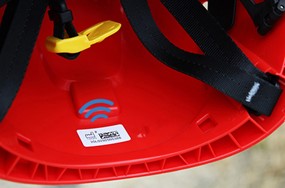
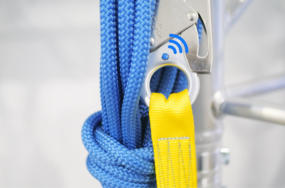
2. real-time inventory visibility
UHF RFID traceability provides real-time visibility of PPE location and availability. In other words, at any time, it is possible to know which items have been mobilized and on which worksite, for example. At the same time, a demobilized item is recorded in stock, but cannot be remobilized until it has been checked. This makes it easier for the manager to keep track of all requests (mobilization, demobilization, etc.).
This technology enables proactive inventory management and rapid response to operational needs.
3. more precise inventories
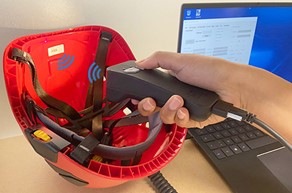

Each PPE item is associated with an RFID tag. This means that each item is individually identifiable, which is essential for accurate inventory. At the same time, an RFIDReader can read several tags at the same time, blind, in seconds and remotely.
This is much faster and less error-prone than manual methods.
This technology enables companies to better control their stock and reduce inventory management costs.
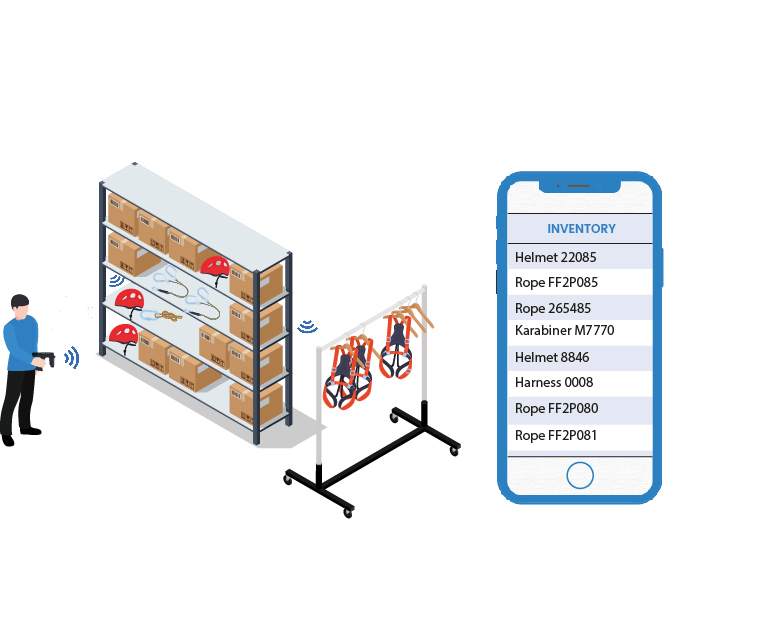
4. Data centralization
All data stored in the memory of the RFID chip associated with the PPE is also stored in a centralized database. This provides quick and easy access to essential information. Digitizing information makes life much easier for PPE users and distributors.
5. Automated maintenance history management
When the maintenance history needs to be consulted, an RFID Reader is used to read the PPE's RFID tag. Once the RFID Reader has read the tag, it communicates with the database which stores the item's maintenance history, updated with each maintenance operation.
RFID enables precise traceability of PPE maintenance history, improving safety and regulatory compliance by ensuring that equipment is always in good working order.
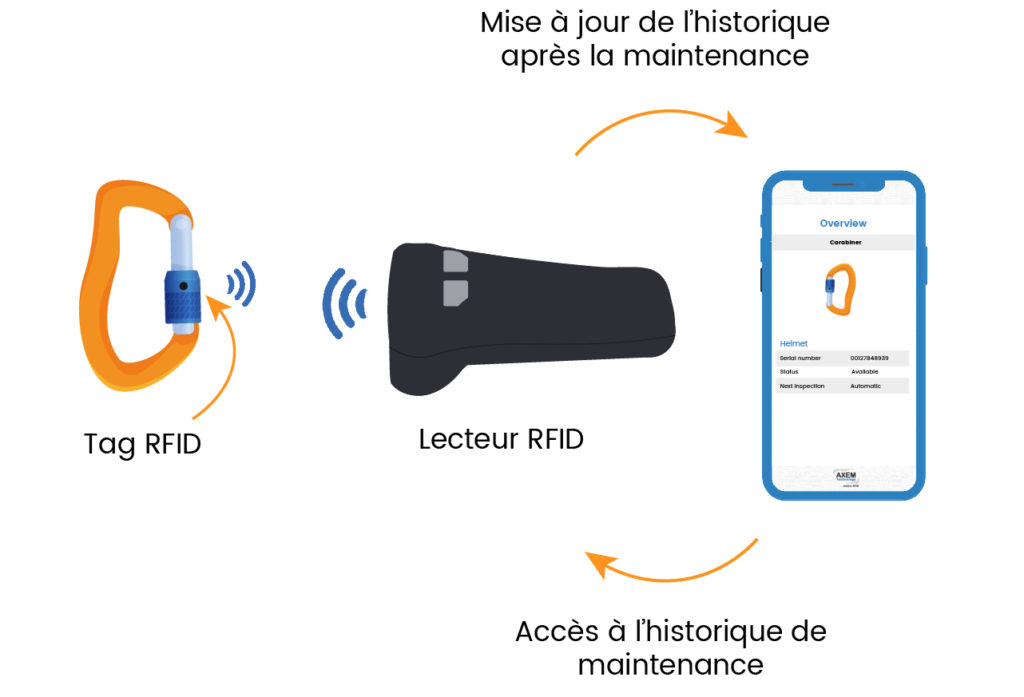
6. Planning future maintenance
Based on the maintenance history, the maintenance team can proactively plan future maintenance operations. It can also decide whether a PPE needs to be taken out of service or repaired, depending on its condition. This increases operational efficiency.
7. Easier management of endowments
Using RFID technology facilitates the allocation of equipment batches to employees, as well as user control. Once again, this data can be easily consulted in the database.
8. Enhanced security
If RFID technology enables us to reliably and accurately record the inspection dates of each item of PPE, it also provides an additional guarantee of access to equipment.
It associates PPE with workers, ensuring that only authorized employees have access to the equipment. This approach helps to improve compliance with workplace safety regulations and reduce the risks associated with improper use of equipment.
9. Proactive product lifecycle management

RFID offers proactive PPE lifecycle management, providing precise data on wear, use and maintenance.
Firstly, the up-to-date database makes it easier to access the care instructions for each PPE item, helping to avoid inappropriate maintenance, thus extending the life of the equipment. This applies, for example, to the washing of garments made from retroreflective or flame-retardant materials.
At the same time, RFID tagging of garments makes it possible to automatically count the number of times PPE is used, thus maximizing its use and anticipating its end-of-life and replacement.
When PPE reaches the end of its useful life, RFID facilitates rapid identification and removal from service.
Finally, RFID data collected throughout the PPE lifecycle can be used to compare different types of equipment, and to select the most robust and suitable.
10. Purchasing optimization
The increased stock visibility made possible by RFID means you know exactly how much protective equipment is available at any given time, reducing the risk of shortages or overstocking.
At the same time, thanks to product lifecycle management, companies can make informed purchasing decisions about repairing, replacing or upgrading equipment based on its actual condition, thus avoiding unnecessary purchases.
What's more, by keeping accurate track of PPE, RFID helps to reduce loss and theft, which in turn means lower replacement costs, resulting in significant savings.
UHF RFID traceability of PPE offers significant improvements in inventory management, safety, regulatory compliance and equipment performance. It also helps to optimize the use of resources, reduce the costs associated with PPE management, and ensure the safe and efficient use of this equipment.
Any questions? Don't hesitate to contact us:commercial@axemtec.com
Subscribe to our newsletter
Receive our news directly in your mailbox!
" * " indicates required fields
